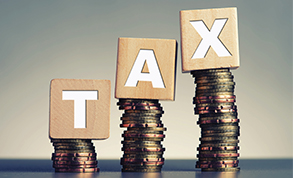Annual allowance taxation rules threaten to exacerbate workforce challenges
Increasing concerns are being raised about how complex pension rules could be leading to senior clinicians reducing their hours, turning down requests to cover for vacancies and, in extreme cases, taking early retirement.
While the issue could affect senior people of all disciplines in the NHS, it is the impact on clinicians that is of most concern. The BMA wrote again to the chancellor in March claiming that the issue is leading to ‘four-, five- and six-figure charges’ and has ‘become a problem that will affect all full-time consultants’. If unaddressed, the problem threatens to exacerbate the service’s workforce challenges.
At the heart of the problem is a limit – the annual allowance – on what individuals can contribute to their pension scheme each year. Introduced in 2006, it was greatly reduced in subsequent years and has been £40,000 since 2014. But from April 2016, a taper was introduced to restrict pensions tax relief for high earners. This taper should affect individuals with ‘adjusted’ income (including the value of any pension contributions) of over £150,000. For the taper to apply, the individual must also have a ‘threshold’ income (excluding pension contributions) of more than £110,000. The taper can reduce the annual allowance to £10,000.
Calculating if someone is affected by the taper and the charge for which they are then liable is complicated. A new briefing from the HFMA explains how the annual allowance works and signposts online resources, including worked examples from the BMA and others (see box).
The annual allowance applies to private and public sector schemes. For private sector defined contribution schemes, it is relatively straightforward to ensure pension contributions do not exceed the allowance. But with defined benefits schemes, the allowance does not focus on contributions but instead represents the maximum amount a pension can grow in the financial year without incurring additional tax.
Depending on which NHS scheme a doctor is in, any increase in pension growth is multiplied by a factor of between 16 and 19. This means small increases in pensionable pay can lead to large deemed pension growth, and this is added to earnings for the calculation of adjusted income and may contribute to further tapering of the annual allowance. Doctors who are members of two NHS schemes (for example, with a legacy pension in the 1995 or 2008 scheme, but who were moved to the 2015 career average scheme) are hit particularly hard.
Any pension growth above the calculated annual allowance is taxed at the individual’s marginal rate.
Chancellor Philip Hammond defended the reforms to pensions and the tapered annual allowance in a Parliamentary debate in May. He said they were ‘necessary to deliver a fair system and to protect the public finances’ – affecting only the highest earners and raising about £6bn a year. ‘However, I do accept that there is some evidence that the annual allowance charge is having an impact on the retention of high-earning clinicians in the NHS,’ he said.
Reports suggest the Treasury and the Department of Health and Social Care are discussing a solution known as a 50/50 pension, where healthcare staff would only pay half the usual amount into their pension for a set period – receiving a smaller pension when they retire. A similar system is used in local government.
If adopted, it might enable doctors to reduce their contributions from the usual 14% of salary to 7% for up to 10 years. However, a blog from Rob Harwood, chair of the BMA’s consultants committee, said the BMA had modelled this solution extensively and it ‘does nothing to remove the tax cliff that occurs at the threshold income of £110,000.’ It added that under the proposal, consultants would still incur significant annual allowance tax bills in some years and under pay into their pension in others.Worked examples
Comments on the BMA website (mostly anonymous) reveal real examples of doctors facing five-figure tax bills, resigning from additional roles or pulling out of extra sessions. However, there are a number of worked examples on the internet demonstrating a range of different circumstances.
In one BMA example, a doctor is promoted from specialised registrar to consultant and his pensionable salary increased by £30,781. However, the total change in his pension benefit value is £160,228. Taking into account the annual allowance and assuming he is carrying forward an annual allowance of £50,000 for the past three years, he will have to pay tax on £70,228 – at 45% this will be £31,603. An example from investment group Tilney also shows how a 58-year old GP could be almost as well off taking early retirement and working as a locum just 2.5 days a week.
Related content
The Institute’s annual costing conference provides the NHS with the latest developments and guidance in NHS costing.
The value masterclass shares examples of organisations and systems that have pursued a value-driven approach and the results they have achieved.